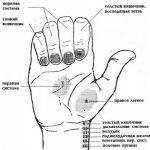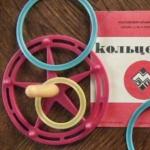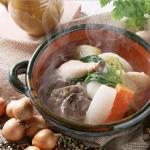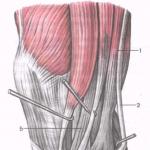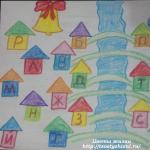Bile stasis symptoms treatment. Diet for gallstone disease in women
Bile is known to be a substance produced by the liver and actively participating in the process of digesting food. The correctness of its allocation is one of the most important conditions for providing the body with all the necessary nutrients.
The substance produced is collected in the gallbladder, where it accumulates and concentrates. Then, as needed, it is fed directly into the duodenum, which is known to be located immediately under the stomach. Bile is needed for:
- fat splitting;
- destruction of harmful microorganisms;
- fungi and viruses.
Violation of the excretory process often leads to stagnation, called medical cholestasis.
The symptoms of this condition are quite characteristic:
- regularly arising pains in the right side of the peritoneum;
- bitter taste in the mouth;
- frequent constipation.
Without timely treatment, the situation is aggravated, and the risk of other, more serious complications is growing. In addition to drug therapy, an important factor is the diet with the resulting bile stasis in the gallbladder itself. Proper nutrition is not only able to significantly improve the patient's well-being, but helps to avoid serious consequences in the long term.
Medical nutrition, which will be discussed below, was developed by experts, and is known under the name "Diet number 5".
Diet
It is well known that in any disease of the digestive system, not only what a person eats but also how and when he eats takes on special significance.
The fact is that even the most useful choleretic products, if the regime was organized incorrectly, would be completely useless and, moreover, harmful. Thus, it is extremely important to follow not only the prescription of the doctor regarding the diet, but also those that are related to the rules of eating.
The main requirement for people suffering from the stagnation of bile, - eat fractional. That is, you need to eat small portions, but very often - up to 6 times per day. The interval between meals should be no more than 4 hours.
The basis of the diet in this situation consists of products, the assimilation of which occurs easily. At the same time they must contain the largest possible amount of dietary fiber (fiber). First of all, these are fruits and vegetables. Dishes based on them will effectively restore the digestive processes, and in addition, to stabilize the work of the mechanism of production and secretion of bile.
Products that contain a large amount of magnesium are also extremely helpful. Salts of this metal are excellent for:
- stimulate the production of bile;
- normalization of liver function;
- improving the work of the LP;
- colon.
Diet involves a complete rejection of the following types of food:
- roast;
- fatty;
- strong meat broths;
- carbonated water.
It is forbidden to eat cold dishes categorically. Everything should be warm. Avoid animal fats, at least for the duration of the treatment. In return, it is permitted to use vegetable oils. Recent nutritionists recommend to use as a salad dressing. Especially useful is olive.
In the event of stagnation, the patient is required to organize the necessary drinking regimen - the daily dose of clean water can not be less than one and a half liters. The liquid should not be cold and carbonated.
What is allowed and what is forbidden
 In reality, patients with cholestasis are allowed to eat a lot of different foods. Thus, a particularly strong sense of deprivation should not arise.
In reality, patients with cholestasis are allowed to eat a lot of different foods. Thus, a particularly strong sense of deprivation should not arise.
In particular, doctors indicate that they are useful:
- lean meat (no visible fat deposits);
- a fish;
- vegetables;
- fruits;
- milk and products from it (fat-free);
- different cereals;
- rye bread;
- sweet biscuits;
- sweet compotes;
From fruit and vegetable products it is worth choosing the one that has little:
- acids;
- essential oils.
They all increase the irritation of the stomach. For example, you can not:
- sorrel;
- radish;
- green onions.
Harmful even different types of pickles, pickles, all legumes. Porridge is cooked both in water and in milk. There are no particular limitations.
Lovers of sweets will have to get used to time getting by with their natural types:
- dried fruit;
- marshmallow;
- honey
- the jam.
All drinking should be consumed in the form of heat. Prohibited:
- cocoa;
- coffee;
- soda;
- alcohol.
Soups should be prepared without the use of meat and fish broth. Food is steamed or boiled. You can still bake in the oven.
As evidenced by the reviews, such restrictions are generally tolerated without difficulty, even during pregnancy. As can be understood from the above, the list is quite diverse, and on its basis it is not difficult to prepare a lot of delicious dishes.
Approximate day menu
The use of permitted types of foods allows patients suffering from cholestasis to avoid monotony in nutrition and to easily endure certain hardships. The main thing, before you begin to use the "Diet number 5", consult with your doctor. He may have to make some adjustments in your particular case.
In a situation if the symptoms are strongly expressed (this happens in the first few days of exacerbation), it is worth confining:
- cereals;
- yogurt or kefir;
- fresh vegetable salads;
- protein omelettes;
- fruits.
When it comes to complications in the form of gastroduodenitis, it is important to completely abandon:
- soups in meat broth;
- fruits.
Everything else from the above list is possible.
Every day you need to drink a mug of water on an empty stomach. It is optional to use mineral water if the expert did not give such recommendation. Enough and ordinary boiled, relatively warm water.
For breakfast they serve:
- oatmeal;
- cheesecakes;
- sweet berry jelly.
Lunch will be quite scarce - 2 apples. This fruit is extremely useful because it contains a lot of dietary fiber. Eating it daily in a noticeable way speeds up recovery.
 Dinner:
Dinner:
- vegetable soup with a spoon of low-fat sour cream;
- steam chicken cutlets;
- vegetable roast, stewed on vegetable oil;
- a glass of juice.
Dine better than grated apples with carrots and a spoon of honey.
- stewed cabbage;
- meat baked in the oven;
- mors
Bile is a substance that is produced by the cells of the liver and is involved in the digestive process. Normally, it passes through the ducts into the gallbladder (LB), where it is collected, concentrated, and then released into the duodenum, where it breaks down fats and fights against pathogenic bacteria, viruses and fungi. If, as a result of any failure, the process of removing bile is disrupted, its stagnation may occur, in medicine called "cholestasis." If you do not pay attention to the symptoms in time - bitterness in the mouth, pain in the right side of the abdomen, constipation, and not seek help, then cholestasis can lead to serious consequences.
One of the main components in the treatment of stagnation of bile in the gallbladder is proper nutrition. It will help not only to improve the patient's well-being, but also to cope with possible complications in the future. Diet, which should be followed with the stagnation of bile in the gastrointestinal tract, developed by dietitians.
Diet with cholestasis
In diseases of the gastrointestinal tract, including the stagnation of bile in the gallbladder, it is important not only what the patient eats, but how he does it. Even healthy food with improperly organized diet can not only bring benefits, but also harm the body. Therefore, the diet for this disease includes not only a set of recommended products, but also the rules for their use.
The main requirement for patients with cholestasis - split meals. The daily rate of fats, proteins and carbohydrates should be divided into 5-6 meals so that the interval between them is no more than 4 hours. In this case, the portions themselves should be small, and the food - easy to assimilate.
Most of the patient's diet should be high fiber foods. These include vegetables and fruits. Dishes from such products help to establish the processes of formation and elimination of bile in the human body.
No less useful will be foods with a high content of magnesium salts. They stimulate the excretion of bile, normalize the activity of the liver, and also contribute to the improvement of the functioning of the gallbladder and colon.
From the diet will have to eliminate fried and fatty foods, broths from meat, carbonated drinks. You should eat only warm food. With this disease, the use of cold foods and drinks is unacceptable. Animal fats can also complicate the course of the disease, so they should be abandoned at least for a while, replacing them with vegetable ones. In this case, you can vary the nutrition salads with the addition of olive oil.
With the stagnation of bile in the gallbladder, it is very important to use a sufficient amount of pure water - at least 1.5 liters per day. It should be non-carbonated and room temperature.
Diet with cholestasis: what can and can not?
Despite the fact that the word “diet” implies limitations, the range of products allowed and recommended for use in case of bile stasis is quite diverse. Meals during illness should include:
- Low-fat varieties of meat and fish. They should be boiled, steamed or baked.
- Vegetables and fruits. As mentioned above, they should take up most of the diet. But it is not recommended to use sour fruits, as well as vegetables and fruits with the content of essential oils that irritate the stomach - radishes, sorrel, green onions. In addition, pickles, pickled vegetables and mushrooms, and legumes are not suitable for patients with cholestasis.
- Milk and dairy products. It is necessary to pay attention to the percentage of their fat content and eat only low-fat or low-fat.
- Kashi. The use of cereals during the period of treatment is welcome, it is allowed to cook them on water or on milk.
- Bread and muffin. Diet limits the consumption of bakery products. The use of rye bread and biscuits is acceptable. But from the baking baking will have to be abandoned.
- Sweets. Sweet tooth will have to be content with fruits and natural products - honey, jam, marshmallow.
- The drinks. The main rule regarding the temperature of consumed beverages - they should not be cold. As for the choice of drinks, the diet recommends that you restrict non-acidic juices, compotes, tea and water. But to drink coffee, cocoa and soda is not recommended. You will have to give up alcohol consumption.
Based on the rules of nutrition during the period of illness, these products should be excluded:
- fatty fish and meat. Food of the patient should not include soups cooked in fish and meat broths;
- sour vegetables and fruits, as well as onions, garlic, sorrel, spinach, radishes;
- sweets, pastries, baking;
- fried, spicy, smoked and pickled foods;
- alcohol, coffee, soda.
In fact, the list of prohibited products is relevant not only in the stagnation of bile. Diet includes a list of products, the use of which should, if not excluded, then at least limit even healthy people in order to avoid problems with the gastrointestinal tract in the future.
![]()
Sample menu for the day
The list of products recommended for use completely makes it possible to diversify the patient's diet with bile stasis. Therefore, the diet prescribed by the doctor, can be not only useful but also enjoyable. If the disease is accompanied by severe symptoms, which happens in the first days of the disease, it is recommended in the diet to focus on cereals, vegetable salads, dairy products, protein omelets, fruits. If bile stasis is accompanied by gastroduodenitis, nutrition should be adjusted in the following way: refuse fatty soups, limit fruit intake, leave cereals, vegetable salads, dairy products in the diet.
The menu might look like this:
- You should start the morning with a glass of water drunk on an empty stomach. If your doctor has prescribed mineral water for you, you should use it in accordance with the recommendations. If the appointment of mineral water was not, then we can restrict ourselves to a glass of boiled water at room temperature.
- Breakfast can consist of oatmeal, cheesecakes and jelly.
- The second breakfast - 1-2 apples. Fiber, which is found in vegetables and fruits, promotes recovery, so diet number 5 recommends introducing them into your diet.
- Lunch - vegetarian soup, steam cutlets, steamed vegetables with vegetable oil and a glass of juice or compote.
- At lunch you can restrict apple and carrot puree.
- Dinner - baked meat, stewed cabbage and fruit juice.
An effective remedy for the stagnation of bile is dogrose broth, which can be consumed throughout the day. It will not only help to improve the work of the digestive tract, but also enrich the body with vitamins.
Bile stasis in the gallbladder is a disease whose treatment without properly adjusted nutrition will not bring the expected results. For the prevention of cholestasis, the diet should be observed even before the first symptoms of the disease appear. Train yourself to lead an active lifestyle, to eat at the same time, at short intervals, with natural products, at the first manifestations of the disease, consult a doctor. Then you will not have to face the problems that in one way or another are accompanied by gastrointestinal diseases.
The organization of proper nutrition for cholelithiasis or stagnation of bile is important, as this disease is very common. Of all the diseases of the gallbladder, it accounts for about 13 percent.
It should be noted that the diet in women with cholelithiasis becomes especially important because they suffer from this misfortune ten times more often than men, which is connected with the hormonal and metabolic features of the female body. Suffer from the stagnation of bile and children, often teenagers.
With exacerbation of gallstone disease through a diet, normalization of the motor activity of the biliary tract and the evacuation capacity of the gallbladder, prevention of the formation of calculi are achieved.
Medical nutrition creates a temporary rest for the sick organ, and in a state of remission it increases the output of bile.
Proper nutrition can provide a long-term remission, and vice versa: with violations of the regimen, abuse of spicy food, and alcohol, the healing processes can be negated.
It is necessary to reduce the amount of energy-intensive food by limiting animal fats and carbohydrates, since cholesterol is the predominant part of the calculus.
Refusing for some time from fatty meats and fish, egg yolk, liver, fatty cheese, lard, beef and lamb fat, you can improve the cholesterol metabolism in the body and prevent the formation of new stones.
It is proven to contribute to the removal of harmful cholesterol from the blood of magnesium salts.
Therefore, it is recommended to enrich the diet with foods rich in magnesium - oatmeal, buckwheat, apricots.
However, it must be remembered that it is necessary to maintain the level of cholesterol dissolved in bile - it is mandatory for the high-quality functioning of the digestive conveyor.

For this purpose, it is necessary to increase bile alkali by consuming herbal products, which should be as much as possible in any form.
And boiled and raw, along with alkaline mineral waters (Borjomi, Luzhanskaya, "Polyana Kvasova").
Fiber-rich wheat bran is also good.
They should be steamed beforehand and added a couple of spoons to the prepared dishes. Baking must be replaced with bran bread.
It is important to ensure the entry of lecithin into the body by consuming butter, sour cream, cream.
According to the pevsner table of medical tables, a diet with exacerbation of gallstone disease, like a diet with stagnation of bile, refers to table No. 5.
The diet should contain a reasonable amount proteins , fat , carbohydrate , do not create a large load for digestion:
- proteins should be from 80 to 100 grams, of which about 45-50 grams of animal protein, which stimulates the secretion of bile
- fats - from 70 to 80 grams, including vegetable at least 30 grams.
- slow carbohydrates - 300-320 grams, of which no more than 70-80 grams of sugar
- salt - up to 10 grams
The daily energy value of such a medical table should be 2170-2480 kcal.
The list of forbidden products with the stagnation of bile and gallstones
This list includes:
- all sweet pastries, white fresh bread
- salty and spicy cheeses, high fat cottage cheese, yolk
- margarine, cooking oil
- any mushrooms
- rich broths, okroshka, mushroom soups
- bean, white cabbage, sorrel
- garlic, onion, radish and radish
- fatty fish, canned fish, smoked meats
- offal, canned meat, smoked meat
- sausages
- bitter and spicy herbs (parsley, dill, basil, thyme)
- spices
- chocolate, butter creams, ice cream
- strong tea, coffee
- fatty meats: duck, pork
- fast food
List of allowed products
The list includes:
- bran bread, rye, crackers, crackers
- oatmeal, buckwheat porridge, semolina and viscous rice
- boiled macaroni
- lean meats (veal, rabbit, skinless chicken, beef, lamb)
- ham, milk sausages
- lean fish
- butter, unrefined vegetable oil
- seafood - contains iodine, cholesterol binding
- buckwheat, wheat bran, nuts, especially cashews, pumpkin and sunflower seeds containing magnesium and vegetable oils
- coffee and tea with milk, alkaline mineral waters, pureed compotes, diluted juices
- vegetarian soups (beetroot soup, fruit, milk with noodles)
- pectin-rich vegetables: pumpkin, beets, carrots, zucchini, cauliflower, bell peppers, cucumbers
- dried fruit, marmalade, marshmallow
- egg white (omelets)
- sour milk, milk, kefir, low-fat cottage cheese and sour cream — their vitamin D shifts the pH of the bile to the alkaline side, preventing salt deposition and stone formation.
Diet

The most important aspect, which is characterized by a diet with bile stasis, is the establishment of the correct rhythm of nutrition, contributing to the best bile outflow.
Frequent and split meals already in itself is a strong choleretic factor.
For stones in the biliary tract and gall bladder, it is necessary to divide the daily ration into 6 doses.
The small intervals between doses positively affect the gallbladder, lead to a constant and uniform release of bile, and frequent small snacks contribute to the quality of the digestive tract, help better absorption, prevent constipation.
But long breaks cause the gallbladder to shrink dramatically, which is the cause of pain.
To prevent liver colic, it is important to adjust the gallbladder to excrete bile at a certain time, which is achieved by carefully observing the meal hours.
Culinary food processing
To reduce the load on the gallbladder and in the acute period of the disease, it is desirable to grind or wipe all food.
Then the gallbladder stops producing excessive amounts of bile, causing spasms of the biliary tract and colic.
Consumed foods must be baked without a crust, boiled or steamed. Extinguishing is occasionally allowed.
Fully frying is forbidden, which contributes to the formation of oxidized fats, adversely affecting the course of gallstone disease.
Food temperature
Cooked dishes should not be too cold or hot, that is, stimulating bile formation.
To reduce irritation of the gastric mucosa, food temperatures should be in the range of 15-65 ° C.
Aug 13, 2015 werden
Diseases of the digestive system are increasingly being diagnosed, and there are many reasons for this: poor nutrition, poor ecology, stress, failure to comply with the daily regimen, etc. Cholestasis or stagnation of bile is a consequence of liver dysfunction, a common cause of digestive disorders and metabolic processes. Most often, cholestasis is detected in patients over 35 years old, but due to the modern rhythm of life of this disease, all age groups are susceptible. Will the right diet help cure cholestasis, and what nuances should those who have been diagnosed need to know? Our article is devoted to these questions.

A diet with stagnation of bile in the gallbladder was based on the following principles:
- You need to eat fractional, 5-6 times a day. Train yourself to eat at the same time. The adjusted mode promotes the best outflow of bile. Prolonged breaks cause the gallbladder to shrink dramatically and cause discomfort to the patient.
- It is recommended to steam or boil. You will have to say goodbye for a while with fried and baked food. During frying, oxidized fats are released that worsen the course of the disease.
- In the period of exacerbation, food should be rubbed or crushed in a blender. During remission, chewing is thorough enough.
- 50-60% of the diet should be warm meals (45-60 degrees), you can not eat very cold and very hot food and drinks.
- Alkaline mineral waters are recommended, with constipation 40% of the diet should be foods rich in fiber (vegetables, fruits, bran bread, wheat bran can be).
- The diet should be complete: no less than 300 g of carbohydrates, up to 80 g of fat, 100 g of proteins should be ingested into the body per day. The amount of salt is limited to 10g, sugar - up to 40.
- Daily energy value - 2200-2500 kcal.
- On the day a person should drink at least 2 liters of liquid (mineral water without gas, green tea, natural juices and compotes).
- Give up long fasting, gluttony is also not welcome. If you want to eat, give preference to healthy foods - vegetable salad, fruit mousse, a glass of kefir or yogurt, a handful of berries perfectly satisfy your appetite.
- From the table you need to get up with a slight feeling of hunger. Do not overeat or overload the digestive system.
- During the period of remission, fasting days will be useful, but the menu for them is selected individually with the attending physician.
- Conversations during meals, snacks on the go, dry bread and other bad eating habits should be a thing of the past.
- Be aware of individual intolerance: get a food diary and carefully write down the products that you enter in the diet. So it will be easier for you to calculate the ingredients that your liver does not want to take.
Allowed and prohibited products
![]()
Let's start with a list of harmful products with bile stasis:
- Sweet pastries, sweets, fresh bread.
- Spicy soups, rich broths.
- Fat cottage cheese, spicy cheese.
- Mushrooms, white cabbage, onions, garlic. And also sorrel, spinach, turnip, radishes, radish, legumes, spicy herbs.
- Fatty meats and fish.
- Canned food, smoked meats, offal, pickles, purchased sauces.
- Fast food.
- Sour fruit and berries.
- Strong coffee and tea, cocoa.
- Some cereals (barley, wheat).
With the stagnation of bile in the diet can include:
- Rye or bran bread, crackers, biscuits, crackers.
- Rice porridge, semolina, buckwheat, oatmeal, as well as boiled noodles.
- Low-fat meat (chicken, rabbit, veal, turkey).
- Dietary ham.
- Unrefined olive, sunflower, linseed oil, up to 10g of butter.
- Low-fat fish (hake, Baltic herring, pike, carp, grouper, pangasius). And also some seafood.
- Vegetarian soups, low-fat broths.
- Wheat bran, nuts, sunflower and pumpkin seeds.
- Low-fat dairy products, cottage cheese, sour cream.
- Vegetables (zucchini, bell peppers, cauliflower, carrots). And also beets, pumpkin, squash, cucumber, tomato.
- Dried fruits, from sweets can be noted marmalade, marshmallows, jam.
- Sweet fruit varieties (in the period of exacerbation it is better to use in the form of mousses and compotes).
- Alkaline mineral water without gas, green tea, natural juices, compote, jelly, weak coffee with milk.
- Eggs (steamed or boiled omelette).
Indicative menu

Table 1. Detailed menu for the week
| Day of the week | Diet |
| 1st | Breakfast: porridge in milk with dried fruits (250g). Lunch: vegetable soup (200g), rice with vegetables (180g). Lunch: fruit mousse (120g), galetny cookies. Dinner: boiled chicken (150g), mashed potatoes (120g). Bedtime: a glass of kefir |
| 2nd | Breakfast: steam omelet with tomatoes. Lunch: noodles soup (200g), chicken meatballs (150g). Lunch: vegetable puree (120g). Dinner: pilaf (150g), vegetable salad (100g). |
| 3rd | Breakfast: cottage cheese with fruit (200g). Lunch: soup with meatballs (200g), carrot puree (80g), veal chop (120g). Lunch: baked apples (150g). Dinner: pumpkin casserole with rice (250g). Bedtime: a glass of yogurt |
| 4th | Breakfast: 1 soft-boiled egg, vegetable puree (200g). Lunch: buckwheat soup (200g), chicken souffle (150g). Lunch: crackers, compote. Dinner: buckwheat porridge with meat (250g), tomato. Bedtime: a glass of acidophilus milk |
| 5th | Breakfast: rice porridge with raisins (250g). Lunch: potato soup (200g), vegetable stew (150g). Safe,: syrniki with sour cream (150g). Dinner: vegetable salad (150g), boiled turkey (120g). Bedtime: a glass of kefir |
| 6th | Breakfast: oatmeal pancakes with sour cream (180g). Lunch: lean borscht (200g), beet salad (100g), chicken meatballs (100g). Snack: jelly, toast with cheese (80g). Dinner: boiled vermicelli with cheese (140g), salad with tomatoes (100g). Bedtime: a glass of yogurt |
| 7th | Breakfast: an omelet from 2 eggs, a glass of kefir. Lunch: vegetable soup (200g), fish stew (150g), vegetables stewed (100g). Lunch: cottage cheese (120g). Dinner: salad with seafood (250g), bran bread (70g). Bedtime: a glass of yogurt |

